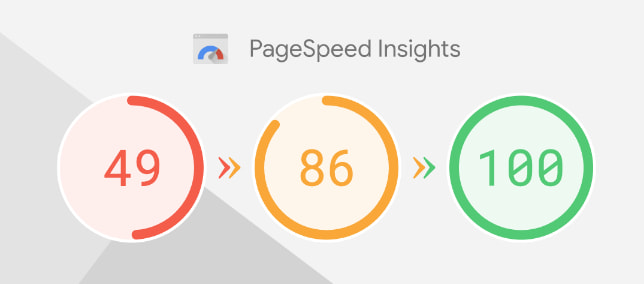Search engine optimization (SEO) is key to driving organic traffic, leads, and sales for any business with an online presence. Improving your SEO can seem overwhelming at first. But it doesn’t have to be!
In this ultimate guide, we’ll walk through actionable tips to boost your SEO in simple, understandable steps. Whether you’re new to SEO or looking to improve an existing strategy, use this as your go-to SEO playbook.

Catch Users’ Attention With Magnetic Headlines
Your headline is the first thing users see in search results. An intriguing, benefit-focused headline entices clicks and attention.
Follow these best practices for irresistible headlines:
- Highlight the user benefit. Explain how your content solves a problem or improves lives.
- Speak directly to your audience. Use conversational language and avoid buzzwords.
- Keep it short. Get your message across in 6-10 words.
- Use keywords naturally. Incorporate 1-2 target keywords so engines connect your headline to searches.
- Add intrigue. Give them a taste of your content without giving everything away.
Craft Compelling Meta Descriptions
Meta descriptions summarize page content in search results. A compelling meta description encourages clicks and improves click-through-rates (CTR).
Make meta descriptions shine with these tips:
- Hook with a user benefit. What value will the reader get from your content? Lead with that.
- Keep it concise. Meta descriptions are truncated at 160 characters. Get to the point quickly.
- Use keywords. Include 2-3 keyword phrases naturally to increase findability.
- Call-to-action. End with a CTA like “Read more” to boost clicks.
- Be accurate. Summarize what the page actually offers so users get what they expect.
Optimize Page Speed For Higher Rankings

Slow page speeds hurt user experience and SEO. Optimize speed with these tips:
- Compress images. Use tools like TinyPNG to reduce image file sizes without sacrificing quality.
- Minify CSS/JS. Remove unnecessary code to streamline files.
- Enable caching. Store static assets like images, CSS and JS in a browser cache so they load instantly on repeat visits.
- Defer non-critical JS. Load scripts that aren’t needed for above-the-fold content later.
- Optimize databases. Index tables, eliminate queries in loops, and tune for performance.
- Upgrade servers. More computing power means faster load times.
Provide Value Through Excellent Content
Informative, engaging content earns links, social shares, and organic growth. Create content that stands out with these principles:
- Solve a problem. Identify issues your audience has and provide solutions.
- Educate and inform. Share interesting insights and data they won’t find elsewhere.
- Entertain and inspire. Engage them with stories, humor, and creativity.
- Format for scannability. Break up text with headers, bullets, and images.
- Optimize for SEO. Use keywords in headings, URLs, alt text, etc.
- Link out to authority sites. Cite references to high-quality external sources.
Build High-Quality Backlinks

Backlinks signal to search engines that useful, reputable sites value your content. Secure backlinks strategically:
- Create linkworthy assets like infographics, how-tos, and listicles that others want to share.
- Guest post on industry blogs after building relationships with site owners.
- Promote content so others naturally link to it.
- Build partnerships and influencer relationships to earn recurring links.
- Refresh existing content and promote it to earn new links.
- Disavow low-quality links to avoid manual penalties. Focus on forging naturally earned, editorially given links instead of artificial ones.
Leverage Social Media With Shareable Content
Social shares indicate value, relevance, and interest to search engines. Gain social traction with shareworthy content:
- Integrate social sharing buttons so readers easily share your content.
- Promote new content on social media when published.
- Engage followers by commenting, liking, and participating in discussions to build community. This encourages shares.
- Analyze social traffic sources to identify which networks drive the most visitors so you can double down on those platforms.
- Make shareable visuals like charts, memes, and infographics. These tend to go viral, earning links and social engagement.
Measure Results and Continuously Optimize
Track SEO metrics to identify what’s working and areas for improvement. Key data to monitor:
- Rankings: Monitor target keyword rankings in Google and Bing.
- Traffic: Analyze sources to evaluate SEO traffic gains.
- Backlinks: Count new unsolicited backlinks pointing to your site.
- Speed: Page speed metrics like time to interactive and Lighthouse scores.
- Engagement: Bounce rates, time on site, pages per visit.
Regularly refine your SEO strategy based on results. Double down on what moves the needle and try new tactics where needed. SEO is never “set it and forget it.” Adapt efforts as algorithms, competitors, and trends evolve.
White Hat Link Building
The term “white hat link building” has become a common way to describe a type of marketing used to improve SEO. The term “white hat” refers to ethical practices that enhance a website’s ranking on search engine results pages (SERPs). In general, it is a process used to increase the number of links that point to a website from other websites.
It helps a site increase its backlink portfolio, resulting in higher search engine rankings. There are several ways to build these relationships; the most effective approach depends on the site’s needs. It generally involves creating valuable and informative content and then sharing it with others.
Why Using White Hat SEO Strategies Crucial?
- A penalty is almost always possible for a company using black hat SEO. These hazards may be avoided by adhering to white hat SEO. The company should follow search engine guidelines and not break any of them.
- Black hat SEO immediately destroys whatever reputation a firm has worked so hard to achieve; as a result, white hat SEO is the best option for fostering a positive online presence for a company.
Conclusion
Improving SEO takes effort, but these tactics will reward you with higher organic search visibility, lower costs per lead and acquisition, and reduced reliance on paid ads.
Focus on value for real people, not checkboxes. Craft content worth sharing without spammy tricks. Be patient and outlast fly-by-night sites with a long-term SEO mindset.
I’m rooting for your SEO success story! Let me know if you have any other SEO questions.
Frequently Asked Questions
How long does it take to see SEO results?
Rankings, traffic, and metrics improve over months, not days. Be patient and focus on continually improving with long-term consistency. Established, authority sites take years to build rankings. Focus on sustainable SEO, not shortcuts.
How much content is needed to rank?
Unique, valuable content is king for SEO. But more isn’t necessarily better. Start by creating pillar pages targeting your most valuable keywords, interlinked with related articles. Quality trumps quantity.
Should I optimize for voice search?
Yes! Voice searches will account for 50% of queries by 2023. Optimize for voice with conversational language, natural phrasing, and longer-tail keywords.
What’s more important for SEO, backlinks or content?
Both carry weight, but original, engaging content earns links and social shares. So quality content is ultimately the foundation of sustainable SEO growth.
How often should I publish new content?
Aim for 1-2 new blog posts per week as a starting point. But focus on publishing consistently vs. chasing volume alone.
What’s the best way to find SEO keywords?
Keyword research tools like Ahrefs, SEMrush, and Google Keyword Planner identify high-value keywords aligned with searcher intent.
Disclosure: The articles, guides and reviews on BlowSEO covering topics like SEO, digital marketing, technology, business, finance, streaming sites, travel and more are created by experienced professionals, marketers, developers and finance experts. Our goal is to provide helpful, in-depth, and well-researched content to our readers. You can learn more about our writers and the process we follow to create quality content by visiting our About Us and Content Creation Methodology pages.

